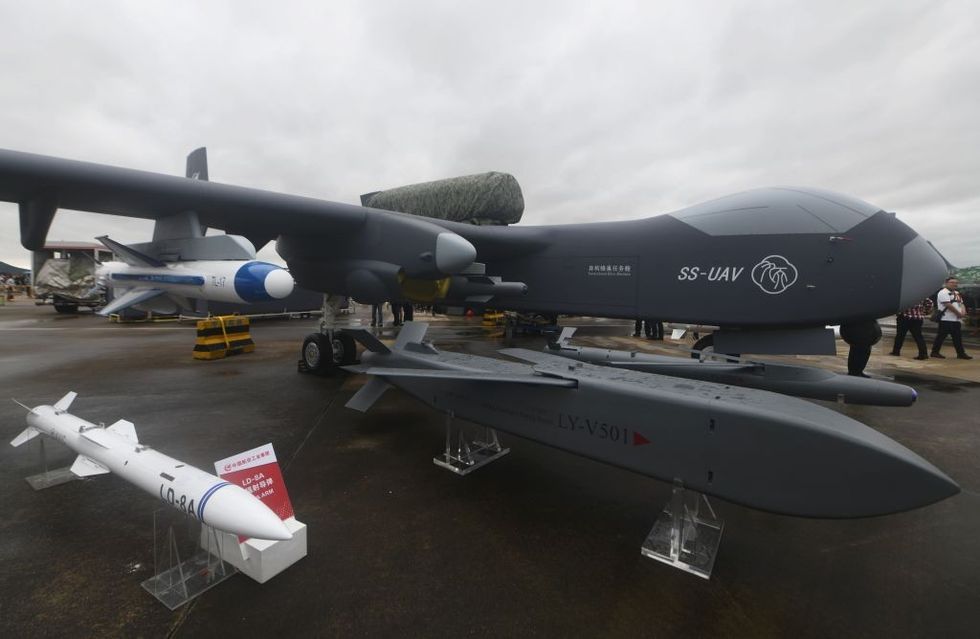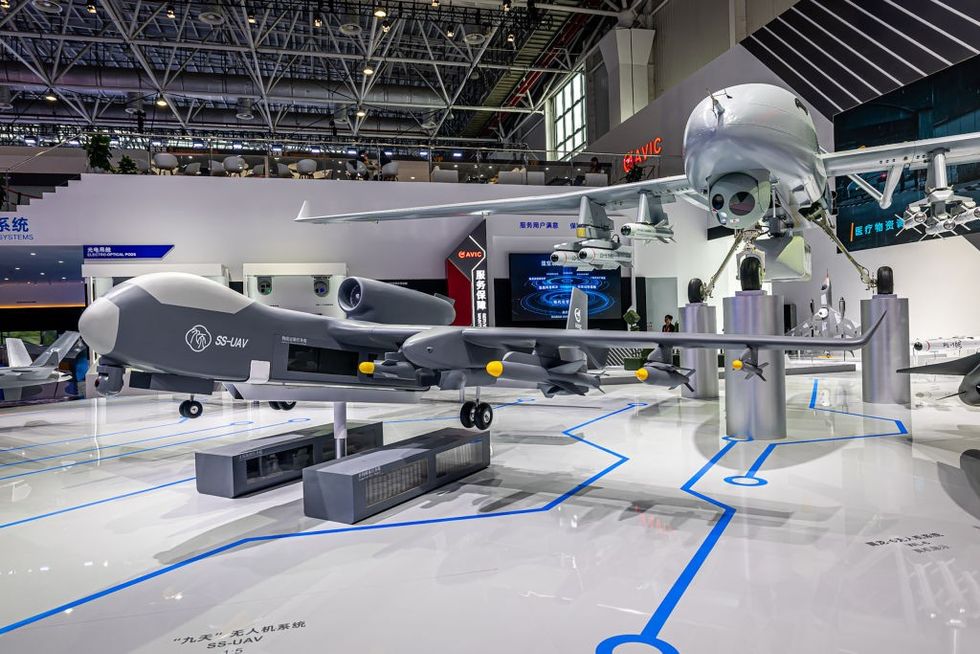China unveils world first aerial aircraft carrier capable of deploying hundreds of automated drones instantly

Jiutian is set to fly for the first time later this year
Don't Miss
Most Read
China is preparing to deploy its groundbreaking first aerial aircraft carrier capable of launching swarms of smaller drones.
The high-altitude mothership Jiutian SS-UAV is scheduled for its inaugural test flight in June 2025, according to reports from Chinese state media.
First unveiled at the 15th Zhuhai Airshow, Chinese state media say the Jiutian represents a significant leap in unmanned aerial technology.
Developed by AVIC in partnership with Shaanxi Unmanned Equipment Technology and Haige Communications, this super-high altitude UAV is designed as a force multiplier for China's drone warfare capabilities, however there are questions about its capability to fly above air defence systems.

A view of Jiu Tian, a new jet drone design
|Getty
The Jiutian boasts impressive technical specifications with a maximum takeoff weight of 16 tons and a substantial 25-meter wingspan.
It can cruise at altitudes of 15,000 meters, which some say it positions beyond the reach of many traditional air defence systems
Chinese media claims it can remain airborne for up to 36 hours on extended missions.
The fourth Jiutian prototype was completed by April 2025, just 18 months after the project's launch, demonstrating China's accelerated development timeline.
LATEST DEVELOPMENTS

A model of the Jiutian SS-UAV, a fifth-generation heavyweight unmanned aerial vehicle, is on display at the Zhuhai International Air Show Centre
|Getty
Analysts view the Jiutian as part of China's growing toolkit to project power into contested regions such as the Taiwan Strait, the South China Sea, and potentially as far as Guam.
Despite its impressive altitude capabilities, modern US and allied defence systems including THAAD, Patriot PAC-3, and Aegis BMD are equipped to intercept threats at or above the Jiutian's cruising height.
The drone's survivability would be highly conditional on the sophistication of the defences it faces, likely requiring suppression of enemy air defences or support from other PLA assets in contested airspace.
The Jiutian programme represents a significant investment for China, backed by over 3 billion yuan in funding and developed with an entirely domestic supply chain. This reflects Beijing's broader ambitions in AI integration and modular UAV design.
While clearly designed for military applications, the Jiutian's versatility extends to civilian uses including emergency logistics, border patrol, search and rescue, and natural disaster response.
Future operations could potentially include launches from 076-class amphibious ships, giving the PLA added reach in offshore operations and naval integration.
Military analysts note that whilst unmanned assets reduce pilot risk, they may also lower the threshold for conflict.











